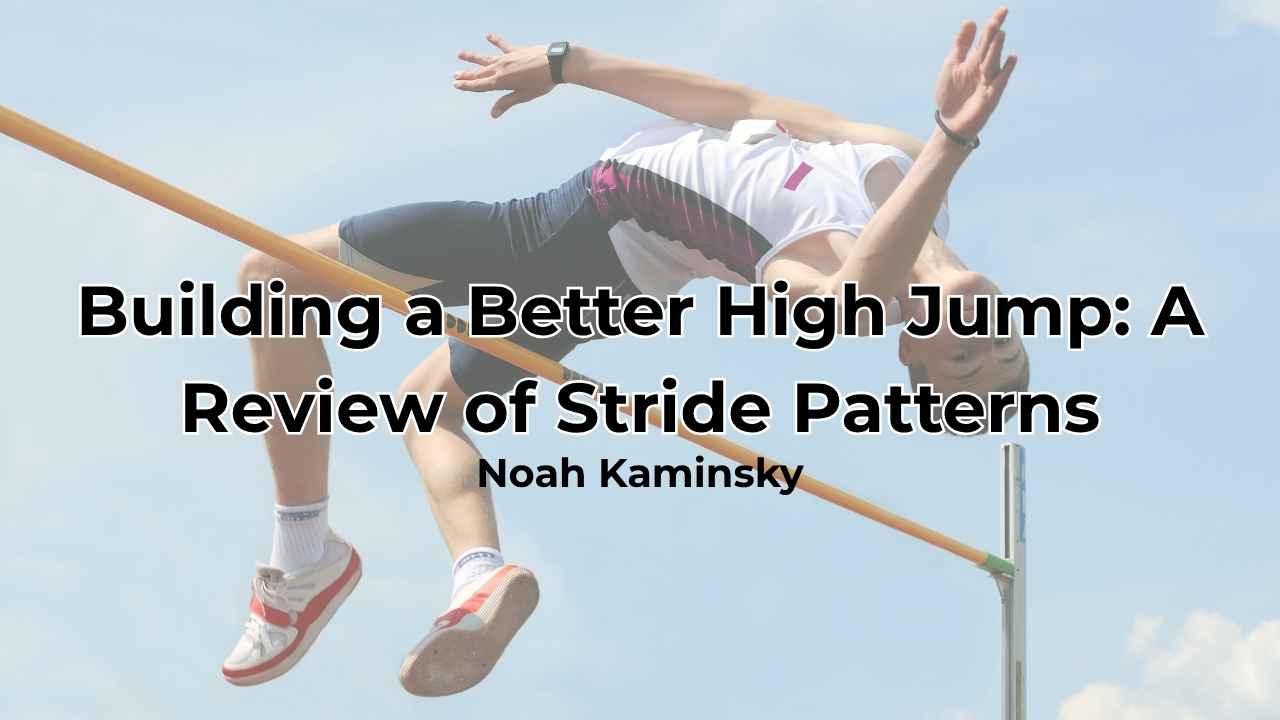[mashshare]
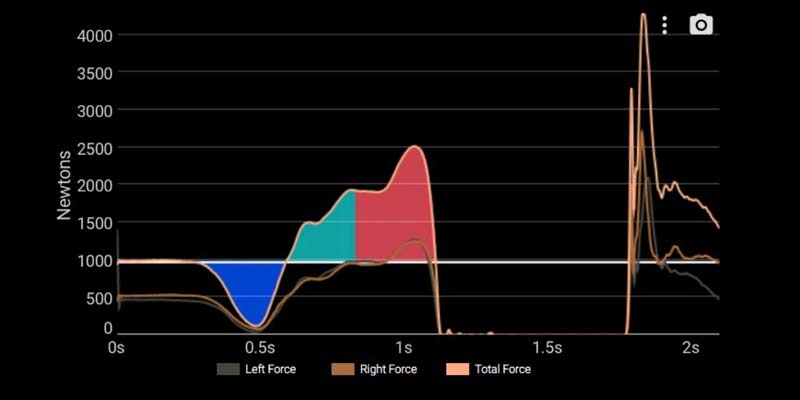
Coaches are scrambling to find the latest formula or training method to merge sport science and practice with athlete development. It seems everyone in sports performance is dissecting the data from force plates or looking at the velocities of player tracking information to see if their sled training is working. Without a framework on how to construct a training program to improve the force-velocity relationship and athlete training, the science is just not useful.
I believe in force-velocity analysis, but believing that training is about a load or a speed profile isn’t new, and the approach doesn’t work as well as it’s claimed. Don’t dismiss force-velocity research or training ideas, just ask how much of it works and what needs to change in training, as 3- to 4-week pre-seasons are not enough to make a real difference in games.
The purpose of this article is to explain the human body’s force-velocity relationships in the real world and step beyond the textbook descriptions common with undergraduate studies. I’ve taken a very straightforward approach, answering questions that are not asked often enough, and sharing a logical, reasoned perspective to manage a complicated scientific training principle. A lot of coaching methodology stems from the force-velocity relationship, and several articles, such as my cluster blog, have addressed the concept, including some of my own here on SimpliFaster.
Most articles about the science of the force-velocity curve push conventional information about how the neuromuscular system works during specific time frames. Because this idea is flawed and has limits, I step away from the concept to help coaches see the big picture. For the most part, addressing training by using the force-velocity relationship has merit, but it’s not a perfect concept. Similar to the horizontal force article that exposed thousands of readers to the limits of exercises to the posterior chain, this article is a warning to those thinking training can be guided by two tests only.
What is Wrong Technically With the Force-Velocity Curve?
At conferences, I’ve warned that the force-velocity curve is misleading, as sprinting’s high velocity does not mean the forces involved are low. How does an athlete run with forces higher than several times their body weight and do it quickly with amazing amounts of coordination? Shouldn’t the force output of running at maximal speed be very, very low due to the high velocity? Concept diagrams are interesting theories, but abstract ideas are not facts.
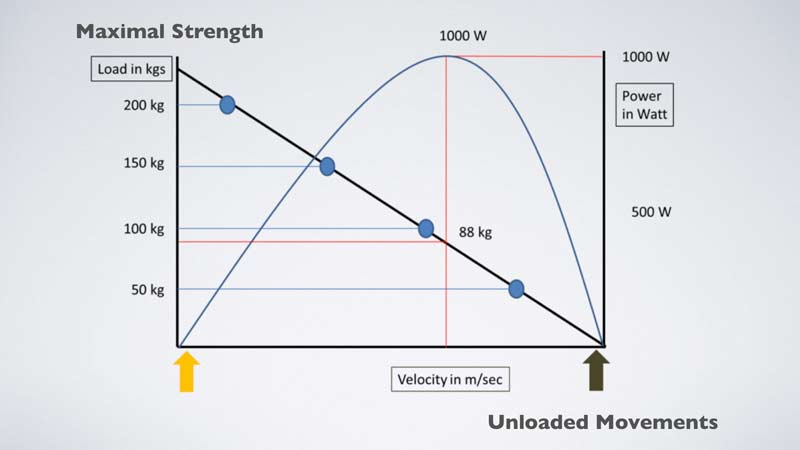
The neuromuscular adaptations from speed training can show up beyond the stopwatch into subsequent force development. Take potentiation methods from strength training, for example, and consider how they help speed output later, even if an athlete doesn’t have perfectly “balanced” force development. Perhaps the curve is not as clean or perfect as its visual representation. Perhaps it’s a general concept about the biological performance model that is great for students to learn but not easy to apply.
Some coaches don’t understand the force-velocity relationship correctly and see it as a load and velocity chart; as the barbell decreases in weight and increases in speed, the coach may falsely assume that the athlete is developing specific qualities. Nothing makes me roll my eyes more than when coaches debate whether they should include a phase of speed-strength or strength-speed in a basketball player’s bench press training program.
Yes, it’s fair to program with attention to detail, but spend your resources on ways to make sure there is a direct transfer to injury reduction or performance increase rather than an idea that only wins online debates.
Another common misguided belief is that we should make the force-velocity relationship a priority in training as if it were a roadmap to excellence.
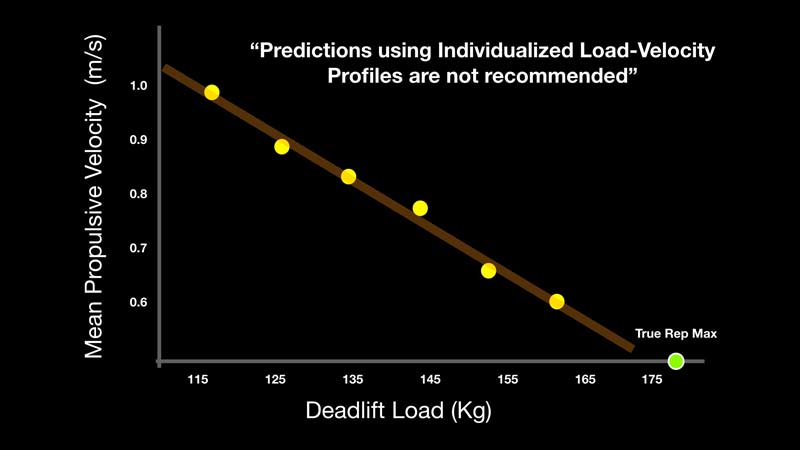
While the relationship is very potent, there are other training factors that may improve performance that aren’t affected by the force-velocity curve. Several methods that are not directly related to force-velocity specific training will help improve athlete profiles. I do think the force-velocity curve has value, but coaches can overrate it if they only read strength training manuals from specific schools of thought from a narrow set of authors.
The force-velocity curve’s X-Y graph does not represent athletic or human performance, says @spikesonly. Share on XThe X-Y graph of the force-velocity curve does not represent athletic or human performance. Rather, it’s an early attempt to explain muscle physiology. The curve may not be an accurate illustration—it’s meant to explain a concept rather than represent a true working model. Several researchers have noted that the true shape of the chart is neither linear nor hyperbolic, and the contractile properties do not fit into a simple line plot.
Simplified charts help take people from ignorance to awareness; it’s up to coaches and the sport science community to go beyond the hype. An athlete can improve their ability to apply more force faster and see an improvement in their jump testing data. But trying to transfer that physiological change to ice hockey speed on a rink may be disappointing.
Another problem with the diluted and summarized math of force and timeframes is that it does not represent all the complexities of the human body, it usually summarizes a single strand of muscle.
Why Good Training Models Break Down
I’m a fan of what Hill and Huxley have done with exercise science. But as Winters and Woo said in their landmark book, Multiple Muscle Systems: Biomechanics and Movement Organization, building on past work to improve athletes requires more than moving the needle. In a breathtaking display of gifted intelligence, the writers shared their simple philosophy:
“Modeling always involves a compromise between mathematical tractability and physical veracity…”
The authors also warned of the engineering and chemistry incompatibility with the realities of the “macroscopic and microscopic” factors of the human body. They argued that the timeless struggle over how modeling a complex organism like a human body in motion is far from perfect:
“Elegant as they are, these models are much too complicated to serve directly as mathematical representations of muscle actuators in motor control studies, and indeed they will be encountered rarely in the remainder of this book.”
The curve likely exists because the models used single-joint simulators in the lab versus multi-joint actions in the wild. When testing jumps and other activities, the curve tends to bend less and become more linear (to a point), according to some research with specific exercises. Other actions in sport create a different shape, but still concede to general patterns of force reduction as velocity increases overall.
Different muscle actions and groups have anatomical properties that make the entire force-velocity relationship very tricky. Eccentric actions may change the architecture of propulsive muscle groups due to the plasticity of the tissues from adaptation responses. This will change muscle contraction without increasing neuromuscular force or power from conventional sources.
The anatomy of muscle actions and groups make the entire force-velocity relationship very tricky, says @spikesonly. Share on XA vital point for coaches: don’t search for an optimal load within the spectrum of force and velocity. Instead, search for a more efficient contraction or motor engram of the brain. An athlete with the same force-velocity fingerprint may produce more force from simple improvements following the SAID principle without actual changes in power production from muscular output. Coaches are fighting for hundredths of seconds in the 30m sprint and lose tenths from bad technique and inadequate volumes of pure sprinting.
Skilled athletes adapt to specificity and repetition. New exercises and unfamiliar loading, although more favorable from a power production standpoint, may not be prudent for performance enhancement.
New exercises and unfamiliar loading may not be prudent for performance enhancement, says @spikesonly. Share on XNervous system adaptations are not as cut and dried as we’d like, but we can find most of the positive changes in two primary levels, the supraspinal and spinal levels. The higher centers show improvements to corticospinal neurons, subcortical neurons, and inhibitory and excitatory interneurons. At the spinal level, we see changes in the motor neurons as well as the inhibitory and excitatory interneurons.
How these changes interact with the force-velocity relationship is not well understood, but it explains why loading based on power optimization is a fool’s errand. Coaches need to look for all advantages and use a wide range of ideas to get athletes better—not believe one roadmap will lead them to gold.
The Composite of Biomotor Abilities and Force-Velocity Relationships
Noted expert, Henk Kraaijenhof, shared a few reminders of Carmelo Bosco’s past work in his article on how velocity-based training is nothing new. True, the idea is not fresh out of the oven. What’s new is the increased use of instrumentation which is far less expensive and more practical now that we use smart devices over laptops.
Henk’s historical examples from the 1990s also remind us that the concept of selecting loads and rep ranges is already clear, and there’s not much room left for true innovation. Like all training ideas, we are not in uncharted waters, we’re just trying to refine earlier work. Carmelo’s physiological considerations with muscle biopsy (fiber type) helped explain how talent trumps training and what to do with a gifted athlete.
Choosing modalities and their sequences in and out of a training system requires more than squat testing and bench press assessments. Creating a training program isn’t only about profiling, although that is important, it’s about looking at all the factors that must be balanced, juggled, and occasionally put on the back burner. Before coaches look at the research and ask how much they can apply in their situation, they should ask if it’s worth their time. Gross and primary concepts have far more impact than smaller ideas on early development and the elite athletes who get by on talent alone.
Medicine balls, once again, are an example of reality. Several people claim medicine balls fit into the force-velocity continuum. But how many pitchers with weak legs gain higher pitch speeds from performing medicine ball rotations? If so what are medicine ball rotations worth speed-wise? If a soccer player has poor conditioning and general speed, does anyone care if they have great horizontal force abilities during pre-season testing? If you have weeks available to simulate a research study, do your experiments demonstrate impressive and worthwhile results that are worth committing to?
As we step back from any viewpoint, perspective allows us to see a bigger picture, usually forcing us to rethink the value of any part of training. Similar to sled loads, resisted speed is one factor of one modality of one biomotor ability. It amazes me how we expect such a small part of the overall training picture to be so potent in a sea of vast factors. On the other hand, everything matters in training to a point, and some areas respond far more favorably than we could have imagined. It’s our job to find these triggers.
Coaching Attitudes vs. Scientific Perspectives
The word optimal is easy to toss around in science, and I’m guilty of using it for convenience. Like many others in sport, I use optimal when I can visualize what is necessary and don’t bother to find a more articulate word. This error is not a syntax debate, but rather a lack of innovation to identify the better solution and its respective terminology.
Optimize is not the same as maximize; the key to training is making appropriate decisions to help an athlete improve. Optimal is often confused with balanced–for example, a force-velocity profile that is developed evenly with speed and strength. Our job as coaches is to push athletes past boundaries, and this requires more from the human body and the human mind.
At the 2017 Sport Technology Association Conference, I gave homage to Dr. Bill Sands for his dedication to the craft for more than the last four decades. He is one of my heroes. But even with our heroes, we can’t look away when we have opposing points a view. An example was his disagreement (my only one) with the sports engineers building skis that were too fast for the athletes. At first glance, it did seem foolish to design equipment that athletes can’t use. But my inner coach and athlete wanted to know if anyone could tame the wild mustang and harness the skis. If the skis could go faster than other models, why not find a way to teach an athlete to take advantage of the design? Sport science guides us, coaches push us, and sometimes athletes do both.
#SportScience guides us, coaches push us, and sometimes athletes do both, says @spikesonly. Share on XConsider the force-velocity concept in the weight room for exercise placement. To me, choosing exercises that fall in different places along the force-velocity curve for the sake of following a specific training school is not proven useful. I am on the record for saying that, while it’s nice to know if a weightlifting variant has specific characteristics, most of the decisions on lifts concern orthopedics, the experience of the athlete and coach, and time constraints.
A soccer player from another country with scant lifting experience needs to do simple maximal strength work, even if he is a world-class player. His profile on a continuum of power is not holding him back, it’s the coaches around him who let him rise through the ranks without disturbing the talent cash cow or performance golden goose.
Another example of science not matching application is the use of heavy sleds or super light sleds. The classic adage, the “operation was a success, but the patient died” rings true—both options are limited, and we should never consider either as an intervention in isolation.
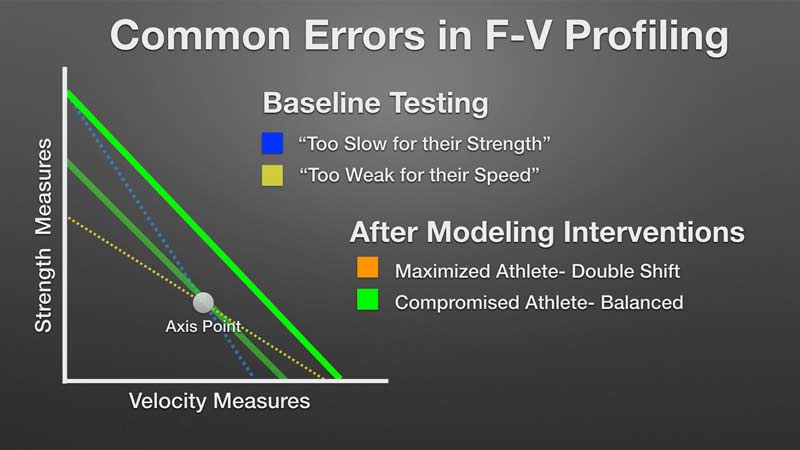
Linemen pushing heavy sleds is fine, for example, but youth athletes need to coordinate upper body actions with lower body motions, so they need specificity. They may improve their 10m dash times, but the next coach will have to fix the errors and other baggage that results from not addressing the total athlete. Heavy sleds may help early acceleration since horizontal forces are important. But if we believe maximal velocity benefits spread globally, why spend so much time on a quality we include in top speed development?
Likewise, super light sleds are not perfect tools for everyone. While later acceleration phases and higher neurological adaptations can occur with light sleds, problems arise if we ignore areas outside the realm of resisted sleds. Even with all the research on tendon injuries, we see very few people stop a session and put an athlete in the garage to fix poor ankle stiffness. Acceleration work requires the foot complex to have sufficient ankle stiffness, and overloading it with too much load may not solve the issue and can make it worse. High-velocity work with light loads or overspeed are also problems—training limitations usually involve connective tissue, not curves on a force plot.
Creating a Framework to Develop an Athlete’s Neurophysiology
Higher outputs of force or velocity, mentioned earlier, may not come from selecting the right load based on profile testing, but from manipulating variables other than gross force and local joint velocities. It’s tempting to sound smart and reinforce how the brain is the target organ to training, but a mature check and balance system must be available for coaches to use.
A coach is not a sports psychologist, though their work does overlap. They must consider how the mind and body connect from a pragmatic perspective. Earlier Pat Davidson shared important information about dopamine and other neurotransmitters. And in a previous article, I explored motor learning from a coaching perspective, giving a few tips on how to better use the science. These two resources are good primers, but they’ll never replace the expertise needed to maximize human performance.
In a thought-provoking research article, Dr. Roger Enoka presented a case for technology helping the evolution of motor unit physiology principles. Dr. Enoka’s work is not an easy read; his expertise is very demanding but indispensable. In one study, he and other notable minds argued the case of low- and high-frequency components in neural drive:
“The motoneuron pool, therefore, corresponds to an averaging system that augments the common (and linear) components of the synaptic inputs it receives relative to the independent components. Due to the low-pass filtering property of muscle, it is the low-frequency components of the common synaptic input that generates the effective neural drive to muscles and controls muscle force, although a role for demodulated high-frequency common input has been also postulated (92) and validated in simulation (115).”
Yet many practitioners plea for the inclusion of more obvious variables to help them use the information provided by research. Although surface EMG and high-density electrodes give clues about our brain and muscles, it’s the neural chemistry and the brain’s emotional areas that usually limit performance. Take a look at any athlete who loses focus, or their cool. They also lose their highly skilled actions while gaining force from their increased arousal level.
The brain’s neural chemistry and areas of emotion are what usually limit performance, says @spikesonly. Share on XThis next frontier in sport is flooded with much debate on both the validity and efficacy of the promise. The San Francisco Giants are using TDCS to push performance in the very slow-to-change sport of baseball. Neuroplasticity is a hot topic. But does neural priming minutes before training elicit a “learning and loading” benefit that rocks the sporting world? It’s better to match the right training load with the CNS status of the athlete, rather than just force a neuromuscular and motor skill agenda.

An athlete with a low subjective willingness-to-train score may show fatigue with Omegawave readings, and overriding it may lead to injury as peripheral inputs from tissue interact with the brain as an early warning system. Increasing the sponge size for learning is great if the teaching is excellent, but learning the wrong information only accelerates the trajectory of failure. Not to say that hacking the brain is a bad idea, but it’s not as simple as supplementing with “technological caffeine.”
Our framework should be one part wisdom and one part systematic progression with strict but flexible criteria for advancement. In the long run, loading without learning is not good; coordination is the ultimate driver in performance. Adding horsepower has never limited sprinting, but if maximal strength or impressive power were the answer, would see a fleet of 9.5 athletes by now.
Force-velocity relationships are a small part of strength and speed training—managing a human being takes more than neuromuscular loading. I’m a big fan of mapping out power development that transfers to training, assisted by force-velocity training profiles. I find that optimal loads usually are limited by lack of maximal effort that requires more than a mathematical formula.
Some Parting Reminders About the Force-Velocity Curve
In this article, I’ve stepped beyond textbook descriptions in this article but I’m in no way attacking past research or worshiping the pioneers. The research we have is timeless, and the practitioners who have accomplished so much without publishing are equally valuable.
Whatever the shape of force-velocity, force-time, time-distance, and load-velocities coaches encounter, a specific load and exercise are only part of the equation. Choosing exercises is similar to choosing ingredients. It also matters how you prepare the recipe with countless variables in unison. Improving athletes takes a village, and understanding which information is limited and what can be expanded is paramount for coaches who are making decisions in training that determine whether an athlete wins or even stands on the podium.
Since you’re here…
…we have a small favor to ask. More people are reading SimpliFaster than ever, and each week we bring you compelling content from coaches, sport scientists, and physiotherapists who are devoted to building better athletes. Please take a moment to share the articles on social media, engage the authors with questions and comments below, and link to articles when appropriate if you have a blog or participate on forums of related topics. — SF
[mashshare]
Reference
- Lake, J.; Naworynsky, D.; Duncan, F.; Jackson, M. Comparison of Different Minimal Velocity Thresholds to Establish Deadlift One Repetition Maximum. Sports 2017, 5(3), 70.

